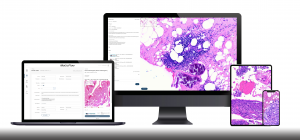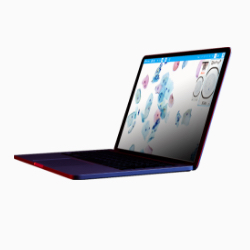While the human pathology space often dominates headlines for telemedicine innovations, advancements for veterinary digital pathology are also steadily marching forward. And, though digital pathology in the veterinary space emerged on a later schedule, we can expect to see a much faster adoption cycle of new technologies than occurred in the field of human pathology due to some crucial regulatory differences.
What Human and Veterinary Pathology Have in Common
When our team speaks to veterinary pathology lab directors, we hear many of the same concerns that their human pathology counterparts share. Just as there is a global pathologist shortage for human patients, currently more pathologists are needed to meet diagnostic needs in the veterinary space. And similar to networked hospitals and research labs that centralize their pathology operations, large veterinary reference labs service many smaller practices and process enormous daily caseloads of animal tissue and fluids.
The need is clear: veterinary pathologists and cytologists require help optimizing their workflows to deliver efficient and accurate care.
Benefits of Veterinary Digital Pathology
That’s where digital pathology comes in.
Because there are fewer restrictions on veterinary diagnosis from virtual scanned slides (no clearing FDA approval, for one), implementing digital pathology into the veterinary space can be much more straightforward than in human pathology workflows. And because hardware manufacturers started out with developing WSI scanners for the human sphere, these machines are typically readily adapted for veterinary diagnostic use.
As with human applications, veterinary digital pathology can cut down on turnaround time for animal disease diagnoses, decrease the costs of shipping slides to specialists, and maximize lab productivity while creating a better work-life balance for pathologists. Veterinary schools that shift to using virtual slides for teaching are able to prepare their students for a wide variety of cases. Digital slide archival and access allow veterinary educators to showcase even rare animal diseases without the limitations of a physical slide library.
What’s Next for Veterinary Digital Pathology?
The largest trend we’re currently seeing in veterinary digital pathology is an aggressive and enthusiastic push for automation. Veterinary reference labs lead this movement, though clinical veterinary pathology and veterinary research institutions follow not far behind. This advancement is certainly one place where we may see veterinary digital pathology leverage technology faster than in the human space.
The challenge in developing smart scanners for veterinary slide scanning will certainly be affordability, particularly as machine learning experts need to gather and parse data about many different species lines rather than a single one. But, as Motic has seen with our AI-enabled malaria scanner developed in conjunction with Global Good, a robust image analysis algorithm that operates as well as highly trained microscopists need not translate to a bank-breaking cost for end-users.
Mutual Benefits
Finally, as proponents of the “One Medicine” model often point out, human and animal health are tremendously interconnected. Advancements in one sphere inevitably affect and benefit the other. So, just as the creation of digital solutions for human pathology opened the door for vet applications, advances in the veterinary digital pathology space will have crossover benefits for humans as well, in both medicine and technology.
Research labs running animal study trials can leverage the power of digital transmission and machine learning to speed up developing treatments for human patients. The large data lakes created with scanned animal slides will drive the field of AI-aided pathology forward as a whole. And advances in slide scanner hardware, refinements to viewing and sharing software, and improvements to efficiency and diagnostic accuracy in animal pathology can only accelerate similar gains in human pathology.
In all, as the veterinary pathology industry rapidly adopts digital technologies, both pathologists and patients — of all types — stand to gain.
Did you know that Motic provides digital pathology solutions for veterinary applications? Contact our team to learn more about how our scanners can benefit your lab!






